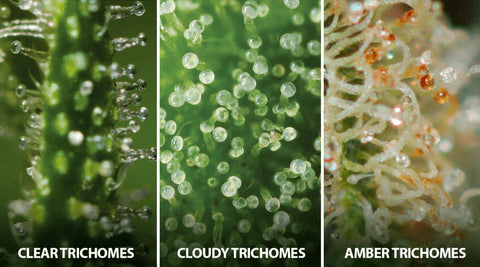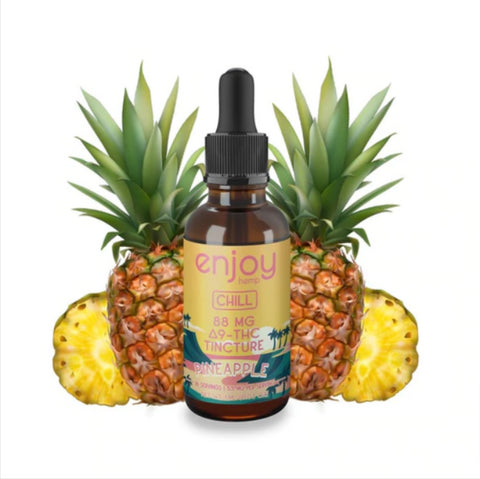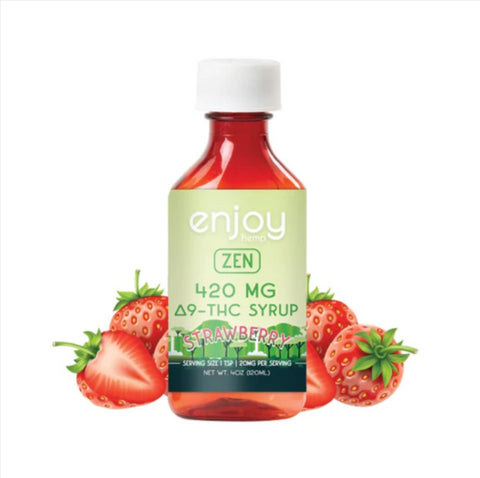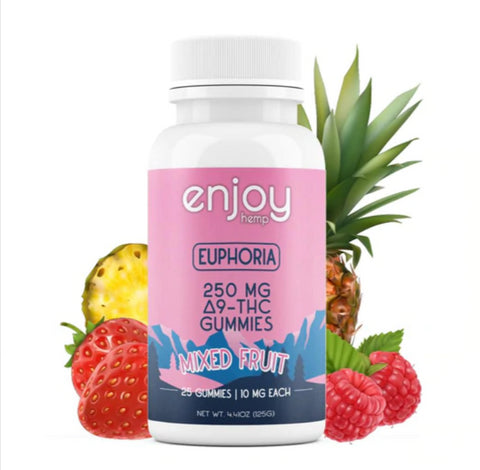If you’re a cannabis user, you’re probably familiar with the sugary, crystal-like appearance that appears on the flower, leaves, or bract - known as trichomes. Trichomes are produced across the cannabis plant, which holds the plant's cannabinoids and terpenes. Most people recognize trichomes as the ‘tiny hairs’ on the plant, so it’s likely that you’ve already seen them.
So, what are trichomes?
The word trichome originates from the Greek word “Tríchōma,” which means growth of hair. The actual definition is “appendages on plants, algae, lichens, and certain protists.” - These tiny outgrowths, or sources of resin, allow the production of cannabis concentrates like; shatter, cannabis oil, hash, and wax. Each trichome has a unique size, shape, and biochemical function.
Trichomes are minuscule biological cannabinoid factories found predominantly on the flowers and sugar leaves of weed, providing a variety of functions and benefits to the plant. Scientists have said that trichomes could affect leaf temperature and photosynthesis, or more complicated functions, such as pest-deterrence via their physical structures or production of compounds, as studied by George J Wagner, stating that trichomes;
“Guide the path of pollinators or affect photosynthesis, leaf temperature, or water loss through increased light reflectance as in desert species.”
What are the different trichomes?
Scientists have identified three categories of trichomes found on cannabis plants:
- Bulbous trichomes
- Capitate-stalked trichomes
- Capitate sessile trichomes
It is believed that trichomes function as a form of survival for the cannabis plant. The sticky resin that coats the plant provides a frontline defense against fungus, insects, and herbivores. Trichomes also play an essential role in helping cannabis grow in difficult climatic conditions.
- Bulbous trichomes
- These are the smallest type of trichomes, sometimes being as little as 10 microns wide - which is actually a fraction of the largest size. These can be found across the surface of the plant - but are too difficult to see.
2. Capitate sessile trichomes
These trichomes are larger than bulbous trichomes, with enough cell numbers to form a trichome head and a very short base. These trichomes have a width of around 20-30 microns, which are not as large as the final category of trichomes, nor as easy to see.
3. Capitate-stalked trichomes
These are much larger and can be seen by the naked eye. These range from 50-100 micrometers wide typically. Capitate stalked trichomes have a stalk that is made from cells known as epidermal and hypodermic cells. On top of the stalk is the head of the resin gland, the ‘capitate.’ The ball-shaped head of the resin gland has a waxy outer cuticle layer which acts as a ‘skin.’ Inside the resin head are the cannabinoids and terpenes. These are produced by specialized cells in-between the top of the trichome stalk and the spherical resin head.
Cannabis trichomes typically appear early in the flowering stage on healthy plants. As trichome heads age, they go from being completely clear to opaque, milky white, and, eventually, amber. See below for reference;

What do the different trichome colors mean?
Clear Trichomes:
As a plant transitions into the flowering phase, noticeably the first trichomes appear. Young and immature trichomes feature a clear, translucent appearance. They maintain this appearance for the first part of this phase before their chemical composition changes significantly for the first time. This color indicates that THC and terpene production is at their peak, while CBD levels are still low. This means harvesting at this color will have a more cerebral psychoactive effect. However, it is still not ideal to harvest at this stage and should be harvested at the next.
Cloudy Trichomes:
Cloudy trichomes occur prior to harvest and indicate that cannabinoid levels have reached their maximum. This does not necessarily mean that it is an extremely potent THC strain, however, as that depends on other factors. While it doesn’t guarantee potency, it is a good indicator of when the strain has reached its production peak.
This is when most growers harvest their flowers, and it is generally considered the right time to harvest. You can also use the pistils as an indicator when more than 50% of the hairs have turned orange it means you’re at this stage.
Trichomes remain cloudy for approximately two weeks. Towards the end of this stage, they start to change appearance once again, indicating more developments in their phytochemical composition - which is why they start turning amber in color.
Amber Trichomes:
If trichomes have turned a visible amber hue, the cannabis plant has probably aged past peak potency. This trait makes trichomes a good indicator of when a plant is ready for harvest. Most growers pay close attention to the state of the plant's trichomes and try to harvest buds right when the trichomes are milky white before they have degraded to amber.
Trichomes turning amber indicate deteriorating THC levels, so it is a fine balance of checking on them several times a day to ensure that harvest happens at the peak moment for both high THC levels and the desired couchlock effects.
What impacts trichome production?
-
Stress training
- Stress training can significantly increase yields when performed correctly. Higher yields tend to mean more trichomes. The process typically involves manipulating the plant's shape to distribute hormones more evenly across the top buds, allowing the plant to make better use of the light.
However, the process of stress training can have negative consequences, like bud discoloration, re-vegging, or hermies, so it’s an ambiguous process to say the least. However, it is usually safe as long as you save any major stress for the last week or two before harvest.
-
Lighting
- The light spectrum is one of the most fundamental parts of a cannabis plant’s ability to increase trichome production. The trichomes protect the plant from UV rays, which means that the more light the plant gets - the more resin it will produce.
Some believe that exposing cannabis buds to UV-B light for the last 2-3 weeks before harvest can increase trichome production and overall potency. The most common source of UV-B light is Metal Halide grow lights.
-
Temperature and humidity
- Temperature and humidity have a massive effect on the growth of cannabis flowers. When temperature and humidity are adjusted to induce stress, the plant may increase trichome production as a defense mechanism.
-
Adjusting the environment
- Each stage of cannabis plant growth influences the production of trichomes. The glands are highly fragile and volatile, which is why ensuring that the plant is growing in the right environment should be a priority - especially in the flowering stage. The purpose of adjusting heat periodically is to avoid the trichomes and terpenes from getting damaged by heat.
This is the general rule of thumb when altering the environment:
Humidity below 30% – Drop the humidity of the growth space below 30% RH for the last 2-3 weeks before harvest to increase trichome production.
Temperature between 70-80°F – Make sure your temperature stays under 80°F (26°C) to ensure the potency is not being baked right off your buds.
- Supplements
- It is essential to give your plants plenty of phosphorus and potassium during their flowering stage. Boosting trichome production requires that a cannabis plant is fed the correct amount of nutrients. If a plant is deficient in nutrients, it slows down all its functions.
Genetics plays the most significant role when it comes to getting the most trichomes out of your cannabis. Genetics are crucial If you want to achieve the best and most trichomes you can, so choosing genetics that produce an abundance of trichomes is essential.















